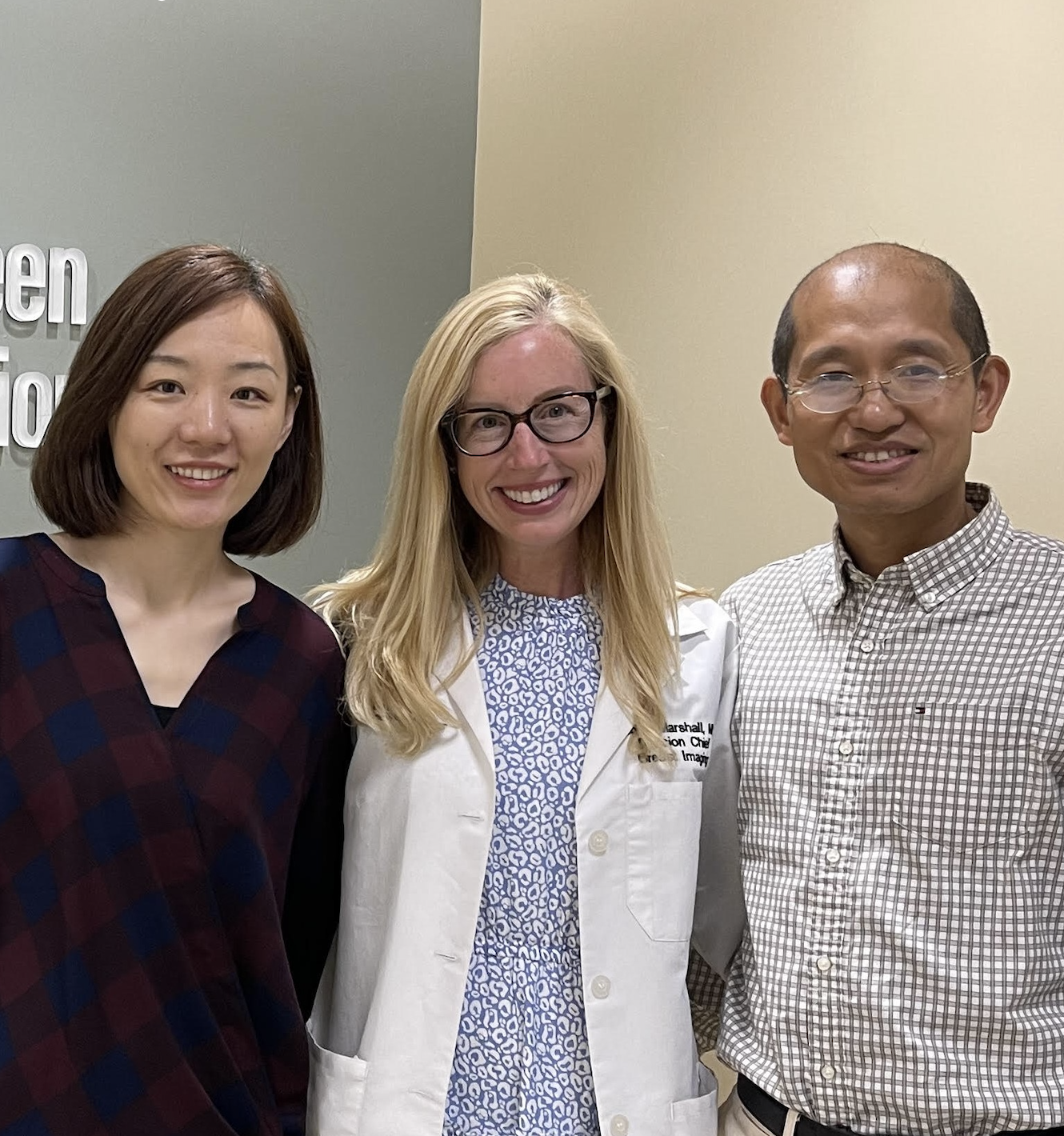(CWRU) and University Hospitals (UH) will study whether a new magnetic resonance imaging exam can predict how chemotherapy’s effectiveness for a woman with breast cancer based on a single round of treatment.
If magnetic resonance fingerprinting (MRF) can consistently produce such results, the researchers believe it could eliminate unnecessary treatment and allow doctors to focus on alternatives without wasting vital time.
“This study has great potential to bring real survival and quality-of-life benefits to our breast cancer patients,” said Yong Chen, an assistant professor of radiology at the Case Western Reserve School of Medicine.
Chen is leading the study with Holly Marshall, an associate professor at the School of Medicine and division chief of breast imaging at UH, and Dan Ma, an assistant professor of biomedical engineering at the School of Medicine.
MRF is a novel approach to magnetic resonance imaging that essentially allows multiple tissues in the body to be examined by taking a single, time-efficient image, or “fingerprint.”
Ma’s lab has been at the forefront of research to develop faster and more comprehensive MRF technology for various clinical applications, allowing early disease detection and assessment of treatment response.
“We are investigating if MRF can predict early response to neoadjuvant chemotherapy in breast-cancer patients,” Marshall said. “If it is discovered through MRF that treatment is not working after the first cycle of chemotherapy, other options could be offered to the patient without significant time lost. MRF has the potential to significantly improve patient care.”
Neoadjuvant chemotherapy is commonly used to reduce the tumor size before surgery for many breast-cancer patients. But because of different mutations in the same genes (known as phenotypic heterogeneity) in breast tumors, not all patients respond to conventional chemotherapy—nearly 80% show partial or no response. The standard method to assess a patient’s response to chemotherapy is a change in tumor size, which can require four to six months and multiple cycles of treatment.
Preliminary results of the researchers’ work suggest MRF methods can accurately assess therapeutic response seven to 10 days after the initial chemotherapeutic cycle, creating the opportunity for significantly improved patient care and flexibility aimed at a more personalized therapy for many women.
“The ultimate goal,” Chen said, “is to eliminate ineffective treatments in eligible subjects and instead tailor the treatment methods for optimum therapeutic outcomes for women with breast cancer.”
The team of study co-investigators includes: Amanda Amin, an associate professor in the School of Medicine’s Department of Surgery; Chris Flask, Mark Griswold and Donna Plecha, professors in the Department of Radiology; and Yilun Sun, an assistant professor in the Department of Population and Quantitative Health Sciences.
###
Case Western Reserve University is one of the country’s leading private research institutions. Located in Cleveland, we offer a unique combination of forward-thinking educational opportunities in an inspiring cultural setting. Our leading-edge faculty engage in teaching and research in a collaborative, hands-on environment. Our nationally recognized programs include arts and sciences, dental medicine, engineering, law, management, medicine, nursing and social work. About 6,000 undergraduate and 6,300 graduate students comprise our student body. Visit case.edu to see how Case Western Reserve thinks beyond the possible.
About University Hospitals / Cleveland, Ohio Founded in 1866, University Hospitals serves the needs of patients through an integrated network of 21 hospitals (including five joint ventures), more than 50 health centers and outpatient facilities, and over 200 physician offices in 16 counties throughout northern Ohio. The system’s flagship quaternary care, academic medical center, University Hospitals Cleveland Medical Center, is affiliated with Case Western Reserve University School of Medicine, Northeast Ohio Medical University, Oxford University, the Technion Israel Institute of Technology and . National Taiwan University College of Medicine. The main campus also includes the UH Rainbow Babies & Children’s Hospital, ranked among the top children’s hospitals in the nation; UH MacDonald Women’s Hospital, Ohio’s only hospital for women; and UH Seidman Cancer Center, part of the NCI-designated Case Comprehensive Cancer Center. UH is home to some of the most prestigious clinical and research programs in the nation, with more than 3,000 active clinical trials and research studies underway. UH Cleveland Medical Center is perennially among the highest performers in national ranking surveys, including “America’s Best Hospitals” from U.S. News & World Report. UH is also home to 19 Clinical Care Delivery and Research Institutes. UH is one of the largest employers in Northeast Ohio with more than 30,000 employees. Follow UH on LinkedIn, Facebook and Twitter. For more information, visit UHhospitals.org.




